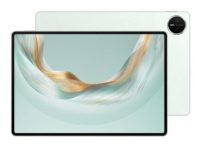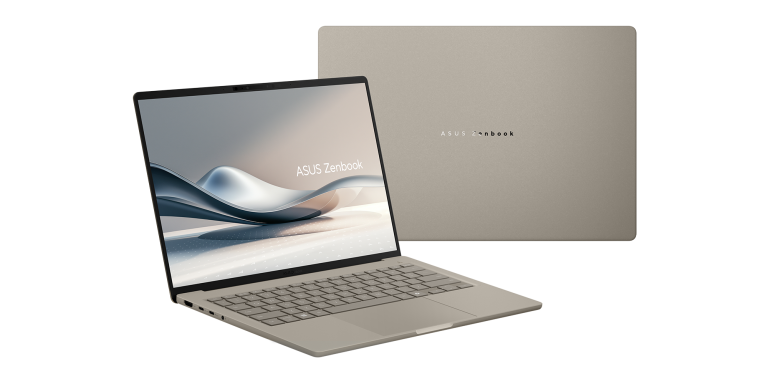MacBook Pro M3 vs Asus Zenbook 14 OLED: Design and Power Compared
In 2025, the race for the perfect ultrabook is closer than ever, and two names dominate that conversation — the MacBook Pro M3 and the Asus Zenbook 14 OLED. Both deliver exceptional design, premium materials, and cutting-edge performance aimed at professionals who demand excellence from their machines. While Apple continues to impress with its seamless ecosystem and efficient silicon, Asus brings innovation through its stunning OLED display and ultra-portable engineering. This detailed comparison explores every angle — from build quality to performance and usability — to help you decide which one fits your professional lifestyle.
Design and Build Quality
The MacBook Pro M3 continues Apple’s tradition of excellence in industrial design. Crafted from a single block of aluminum, its unibody construction feels solid, elegant, and precise. Every edge, key, and port is machined to perfection. It’s slightly heavier than the Zenbook, but that weight adds to its premium feel and stability. The smooth hinge and minimalistic aesthetic create an unmistakable professional appeal. Available in multiple finishes like Space Black and Silver, it strikes a fine balance between luxury and utility.
The Asus Zenbook 14 OLED, on the other hand, focuses on being sleek, lightweight, and futuristic. Weighing just around 1.2 kilograms, it’s significantly lighter than the MacBook Pro, making it a better travel companion. The diamond-cut edges, thin bezels, and compact frame give it a modern aesthetic. Its chassis is made of durable aluminum alloy that feels premium without the added bulk. The Zenbook’s lid features a subtle pattern and a reflective Asus logo, adding visual flair. Its design feels more contemporary, while the MacBook’s design feels timeless and refined.
Verdict: The MacBook Pro M3 exudes strength and luxury, while the Zenbook 14 OLED delivers sleekness and portability. The winner depends on whether you prefer elegance or mobility.
Display and Visual Experience
Apple’s Liquid Retina XDR display on the MacBook Pro M3 is a benchmark in laptop screen technology. The mini-LED panel offers remarkable contrast ratios, stunning brightness, and deep blacks that rival professional monitors. It supports HDR content, making it ideal for video editing, photo retouching, and graphic design. The color accuracy is nearly flawless, with support for the P3 color gamut, ensuring that professionals can rely on consistent tones across projects.
Meanwhile, the Asus Zenbook 14 OLED brings a breathtaking 3K OLED display that truly shines for creators and multimedia enthusiasts. The OLED panel delivers rich contrast, sharp detail, and vibrant colors with 100% DCI-P3 coverage. It also supports a high 120Hz refresh rate for smoother visuals during animations and scrolling. What sets it apart is its touchscreen functionality — allowing direct pen input for sketching, annotating, and editing.
Verdict: The MacBook Pro M3 wins for HDR precision and brightness, but the Zenbook 14 OLED dominates in touch versatility and refresh rate. Both are top-tier displays that will impress professionals and artists alike.
Performance and Power Efficiency
At the heart of the MacBook Pro M3 is Apple’s custom M3 chip, built on a 3-nanometer process for improved performance and power efficiency. The chip integrates an 8-core CPU and a 10-core GPU, offering fast rendering, smooth multitasking, and strong performance under sustained loads. macOS is finely tuned to the M3 architecture, delivering fluid performance across creative and productivity applications. Whether you’re editing 4K video, managing large spreadsheets, or running multiple virtual desktops, the M3 handles it effortlessly with minimal heat and noise.
The Asus Zenbook 14 OLED runs on Intel’s latest Core Ultra processors, featuring hybrid architecture with performance and efficiency cores. It offers excellent multitasking capabilities, smooth app performance, and improved integrated graphics. Combined with Intel Arc graphics, the Zenbook performs well in light creative workloads and casual gaming. However, under prolonged heavy use, the MacBook’s thermal management gives it a noticeable edge in sustained performance.
Verdict: The MacBook Pro M3 provides superior power for heavy-duty creative work, while the Zenbook 14 OLED offers great balance for professionals who prioritize portability and daily performance.
Connectivity and Ports
The MacBook Pro M3 includes a thoughtful array of ports designed for professionals. It features multiple Thunderbolt 4 ports, an HDMI output, an SD card slot, and a headphone jack. These options provide flexibility for connecting external monitors, storage devices, and cameras without relying too heavily on dongles. Apple’s MagSafe charging port is another advantage, ensuring convenience and safety.
In contrast, the Asus Zenbook 14 OLED also brings impressive connectivity for its size. It offers two USB-C Thunderbolt ports, one USB-A port, an HDMI port, and a microSD card reader. This combination caters to users who still need access to traditional peripherals while maintaining a slim profile. Asus’s inclusion of a physical HDMI port makes it easy for professionals to connect projectors or external displays on the go.
Verdict: Both laptops excel in connectivity. The MacBook Pro’s SD slot and MagSafe charger provide extra convenience, while the Zenbook’s USB-A port and full HDMI support make it more adaptable.
Battery Life and Power Management
Battery life is a critical factor for professionals who work remotely or travel frequently. The MacBook Pro M3 offers exceptional endurance, lasting up to 18 hours on a single charge during standard productivity use. Its combination of efficient hardware and macOS optimization ensures that even heavy workloads drain the battery slowly. Fast charging capability allows the battery to reach 50% in just 30 minutes, adding practicality to its performance.
The Asus Zenbook 14 OLED delivers impressive battery life as well, offering around 14 to 16 hours under moderate usage. However, OLED displays tend to consume more power, especially at high brightness levels. The Zenbook’s fast-charging feature still provides convenience, delivering around 60% charge in less than an hour.
Verdict: The MacBook Pro M3 leads in battery life due to its more efficient silicon and software optimization. The Zenbook remains strong, but its OLED display slightly reduces runtime.
Software Experience
The MacBook Pro M3 runs on macOS Sonoma, a seamless ecosystem that integrates perfectly with other Apple devices. Features like AirDrop, Handoff, and Universal Clipboard make transitioning between iPhone, iPad, and Mac effortless. Security, stability, and user experience are key strengths of macOS, making it ideal for professionals who value reliability.
The Asus Zenbook 14 OLED runs on Windows 11, offering a familiar interface with vast software compatibility. It’s especially suitable for professionals who rely on enterprise software, engineering tools, or Microsoft’s productivity suite. Asus’s MyASUS software also allows for customization of performance profiles and system tuning.
Verdict: macOS excels in ecosystem integration and reliability, while Windows offers greater flexibility and broader software support. Your workflow determines which system fits best.
Price and Value for Professionals
The MacBook Pro M3 carries a premium price tag but justifies it with unmatched performance, build quality, and ecosystem longevity. Its resale value and long-term software updates make it a wise investment for creative professionals.
The Asus Zenbook 14 OLED provides excellent value for money. It’s often priced lower while still offering flagship performance, a stunning OLED screen, and robust features. For professionals who need an affordable yet premium experience, it delivers exceptional worth.
Verdict: The MacBook Pro M3 offers premium long-term value, while the Zenbook 14 OLED provides outstanding short-term affordability without compromising quality.
Final Verdict
Choosing between the MacBook Pro M3 and Asus Zenbook 14 OLED depends on your workflow, ecosystem preference, and lifestyle. If you’re a content creator, designer, or developer who values unmatched power, color accuracy, and battery endurance, the MacBook Pro M3 is the ideal choice. Its combination of Apple’s M3 silicon, superior display, and seamless macOS integration make it a powerhouse for creative professionals.
On the other hand, if portability, modern design, and affordability top your list, the Asus Zenbook 14 OLED is a phenomenal option. Its OLED display, lightweight design, and flexible connectivity make it a joy for travelers and professionals on the move.
Both laptops redefine what it means to be powerful yet portable, and whichever you choose, you’ll own one of the finest ultrabooks of 2025.



















